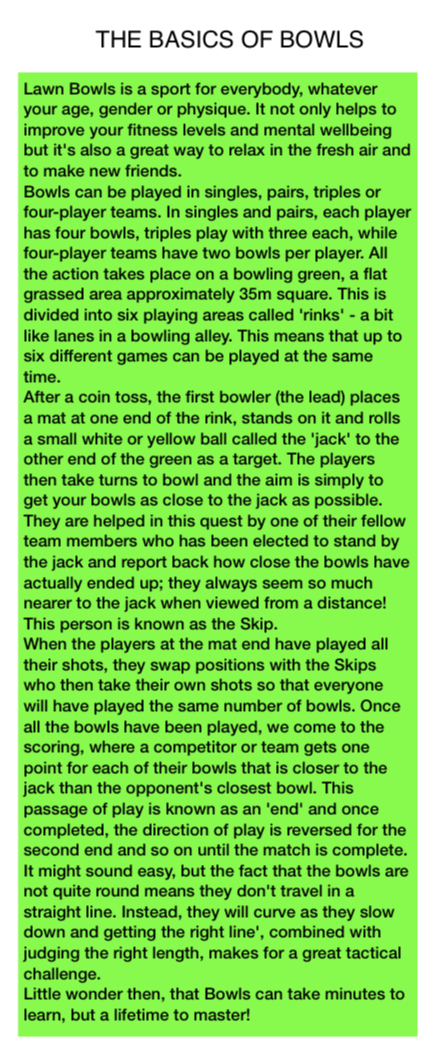 Lawn Bowls is a sport for everybody, whatever your age, gender or physique. It not only helps to improve your fitness levels and mental wellbeing but it’s also a great way to relax in the fresh air and to make new friends.
Lawn Bowls is a sport for everybody, whatever your age, gender or physique. It not only helps to improve your fitness levels and mental wellbeing but it’s also a great way to relax in the fresh air and to make new friends.
Bowls can be played in singles, pairs, triples or four-player teams. In singles and pairs, each player has four bowls, triples play with three each, while four-player teams have two bowls per player. All the action takes place on a bowling green, a flat grassed area approximately 35m square. This is divided into six playing areas called ‘rinks’ – a bit like lanes in a bowling alley. This means that up to six different games can be played at the same time.
After a coin toss, the first bowler (the lead) places a mat at one end of the rink, stands on it and rolls a small white or yellow ball called the ‘jack’ to the other end of the green as a target. The players then take turns to bowl and the aim is simply to get your bowls as close to the jack as possible. They are helped in this quest by one of their fellow team members who has been elected to stand by the jack and report back how close the bowls have actually ended up; they always seem so much nearer to the jack when viewed from a distance! This person is known as the Skip.
When the players at the mat end have played all their shots, they swap positions with the Skips who then take their own shots so that everyone will have played the same number of bowls. Once all the bowls have been played, we come to the scoring, where a competitor or team gets one point for each of their bowls that is closer to the jack than the opponent’s closest bowl. This passage of play is known as an ‘end’ and once completed, the direction of play is reversed for the second end and so on until the match is complete. It might sound easy, but the fact that the bowls are not quite round means they don’t travel in a straight line. Instead, they will curve as they slow down and getting the right line’, combined with judging the right length, makes for a great tactical challenge.
Little wonder then, that Bowls can take minutes to learn, but a lifetime to master!